Telephone, email, live chat, or instant messaging.
Today, you can interact with your favorite brands in multiple ways. This lets brands establish personal connections with customers and solve their problems faster.
According to the Harvard Business Review study, over 70% of shoppers use more than one communication channel throughout the customer journey.
Thus, businesses need to offer several channels to meet customers’ high expectations today.
So, the question is, have you established omnichannel customer experience in your organization?
If not, this guide is for you. It will help you understand omnichannel customer support and how to deliver it. So, let’s dig in.
Table of Contents
- What is omnichannel customer service?
- Omnichannel communication vs. multichannel communication
- How can omnichannel customer service benefit your business?
- How to build your omnichannel customer service strategy?
- Best omnichannel customer service strategy
- Best omnichannel customer service platforms
- Real omnichannel customer support examples
- Let’s build an omnichannel customer service module now!
What is omnichannel customer service?
Omnichannel customer service is a process that connects customers with a brand across multiple communication channels. Popular communication channels are:
- Social media messaging
- Video conferencing
- Chatbots
- Emailing
- Telephone
- SMS Texting
Omnichannel contact centers not only allow customers and agents to connect during the customer journey. It also helps to sync conversations, notes, and files and monitor customer service across multiple channels.
This is helpful when customers switch between devices and touchpoints during the customer journey. Also, when multiple clients are assisting one client at a time, omnichannel communication helps to know—
- Where was the conversation left off?
- Which sales agent has previously interacted with?
- Which issues are still pending?
- Which issues are already solved?
Omnichannel communication vs. multichannel communication
People often consider omnichannel and multichannel communication the same. But they are not.
Besides the fact that both approaches keep customers first while providing support, they are polar apart. Let’s see how both communication channels are different—
Integration
Omnichannel communication is an integrated and unified communication approach. It facilitates customers to switch between communication channels at any point of the conversation. And the conversation will resume from where customers have left it off.
Multichannel communication is not uniform. Every communication process works separately.
Here if a customer wants to switch to email communication mode, they have to interact with the email customer service team. They have to restart the conversation with a multichannel approach.
In the omnichannel mode, you don’t have to restart conversations as it is well-integrated.
Messages
Omnichannel communication allows companies to send uniform messages across all channels. On the contrary, multichannel messages vary from channel to channel.
This can increase the customer support team’s workload as they have to prepare separate customer service plans for every channel.
Better customer experience
Omnichannel communication is more driven by customer experience. Since it is integrated and synced across all platforms; thus, it can enrich the customer experience.
How can omnichannel customer service benefit your business?
Do you know that 49% of consumers have left a brand due to poor customer service in the last few years?
Customer experience is the cornerstone to improving your customer retention rate and sales. And with an omnichannel support system, you can provide multiple touchpoints to customers so they can seamlessly communicate with you.
Besides this, omnichannel communication can help businesses to:
Fast resolutions
More communication channels mean customers can connect with agents faster. They don’t have to wait in a long queue to share queries with authoritative people in the organization.
In addition, if a customer finds a communication channel busy, they can switch to another channel and get their problems solved quickly.
Saves time
It is very well known in the business world that poor time management can cost your business dearly.
Omnichannel communication saves customers from the trouble of repeating their problems to each agent. They can switch communication modes anytime, and the conversations will resume from the same point where they have left them before.
Not only customers but agents can also save their time with this communication approach. They don’t have to waste time understanding the problem or getting details from each customer. They simply have to access their contact center, and all the information about a customer will come on their screen.
This will eventually improve customer satisfaction and loyalty, leading to better sales and revenue.
Personalized service
Personalized customer service helps to provide value and emotionally connect with your customers. When agents use personal information to solve customer queries, this will make customers more connected with the brand.
They will feel that the brand cares about them, leading to higher customer satisfaction. Omnichannel communication provides agents with the accurate resources to access customer databases to offer personalized service.
This includes order history, previous interactions, account information, and more. Using this data, companies can get insightful information about their customers. This can also help them to practice account-based marketing and target the most profitable accounts for recurring sales.
Stimulates repurchase
Repurchase is a golden ticket to improving your sales. When you satisfy your existing customers with high-quality service, they will not hesitate to purchase again from you.
In fact, 50% of eCommerce customers are repeat customers. This, in return, will reduce the marketing budget as your satisfied customers will automatically purchase again.
It will also increase customer spending on your portal. More communication channels will let you better convince prospects to purchase and shorten the customer journey.
Supports self-service purchase
Some communication channels will allow you to provide self-service purchase options to your customers. For instance, live chatbots enable customers to interact with brands without agents. Customers can ask anything and anytime that will shorten customer journey and fasten up conversion rate.
Accelerate revenue
The omnichannel approach will remove all potential purchase barriers to accelerate revenue. For example, by using a desired communication channel, prospects can clear their doubts quickly. This way, they can make purchase decisions effectively.
How to build your omnichannel customer service strategy?
So, omnichannel customer service is important for your business to generate loyal customers, revenue, and consistent growth. Now, the next question is how to customize your omnichannel customer service system.
Step 1. Evaluate customer expectations
First of all, understand what your customers expect from you. Do they want fast solutions? Do they prefer personal interactions? Or something else.
Once you know what your customers want from your support team, you can better map out plans to meet their expectations.
To learn about your customers’ expectations, you can leverage social media. You can use social media scraping tools to find your customers’ social accounts and monitor their comments or other mentions about your brands to know how they want you to improve customer service.
You can also directly message your customers or organize surveys to get real-time feedback.
Step 2. Select a communication channel
After learning your customers’ expectations, you can select the perfect communication channel to support them.
For example, the TimeDoctor audience includes professionals who prefer self-solutions to conduct thorough research before making a purchase decision. Therefore, we use communication channels like FAQs pages to let users properly read relevant facts about our solutions.
Step 3. Invest in the right technology
Technology is the backbone of omnichannel customer service. Without automation, it is impossible to access customer data and sync it across multiple channels.
Today, sales CRM solutions are used by most businesses to streamline their customer support system. Almost 82% of companies use CRM to generate sales reports today.
Besides CRM, companies need to adopt many other tools to support omnichannel customer support, such as:
- Video communication. Businesses can provide elevated personalized service to customers using face-to-face communication tools.
- Call center automation. Call center automation tools to help record sales calls, maintain customer databases and provide seamless audio customer support.
- Real-time messaging. You can offer 24*7 online support to your customers via instant messaging solutions.
- Bots. Bots are AI-driven solutions that empower agents. Through bots, you can solve small customer queries automatically, which will save agents time. Allowing customer service agents to focus more on improving the customer support system in the organization.
Step 4. Upskill your team
Omnichannel customer service is a complex system. Plus, technological advancement has made it even more robust. Thus, you have to provide significant training to your customer support team to—
- Show them how to use the latest customer service technologies
- Teach them different omnichannel customer service strategies
- Keep them aware of customer support goals and more
Step 5. Build self-service material
Self-service is one of the important customer support channels. This allows companies to educate customers about their product features, benefits, and other aspects.
Therefore, you should build a vast self-service material for your customers to explore, such as tutorials, video manuals, FAQs pages, etc.
Self-service portals also support personalization and content marketing. For example, you can target relevant keywords on your FAQs page, and scraping Google SERP, which can help to improve your search engine ranking.
Besides this, you just have to create self-service material once. It will reduce the constant need for customer service agents. That means self-service will reduce your customer management budget as well.
Step 6. Set security protocols
Multiple communication channels can create a security problem for customer support teams. It will become more challenging to provide high-end security to customers across all platforms.
Thus, if your budget allows, customize a security system to store your customer databases. You can create a security system to secure customer information present on all business automation tools like accounting software, CRM, etc.
Step 7. Monitor customer preferences
Finally, you should monitor your customers’ interaction on all support channels. This will not only help you understand your customers but also provide insight into their overall journey.
For example, you can refer to conversation history to know whether your customers prefer text messaging, chats, or calls to interact. This way, you can strengthen the communication channel your customers use more.
Plus, you can save the resources that you are unnecessarily spending on the least preferred communication channels.
Best omnichannel customer service strategy
Once you have built your tailor-fit omnichannel customer service strategy, you must optimize it to drive maximum results. Here are a few strategies that can help you strengthen your customer support channels:
Mobile-friendly support system
According to Statistica, mobile data traffic is expected to reach 77.5 exabytes per month worldwide by 2022. That means mobile users are responsible for half of the web traffic.
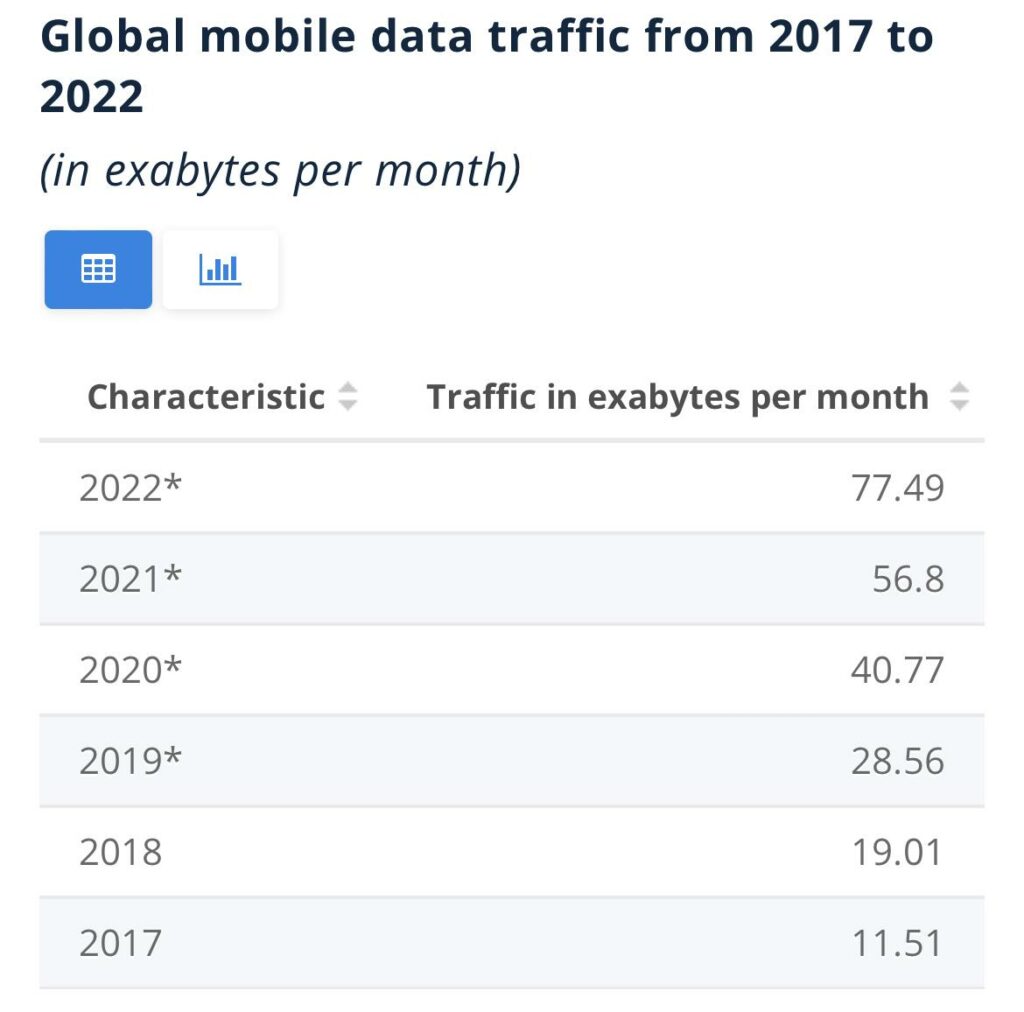
Therefore, you need to provide mobile-friendly customer support channels to your users. Today, you can offer multiple support channels via mobile apps, such as:
- Live chat support
- Instant messaging
- Chatbots, etc.
While developing a mobile solution, make sure to offer personalized service to maintain your brand message. In addition, you can optimize all your web pages for mobile devices.
Also, create a module to track and monitor in-app customer behavior. This will provide valuable customer data to develop marketing and sales strategies. Whether you’re using SMS notification, email, or other means of communication, make sure to also provide proper customer support.
Prioritize live chat over chatbots
Live chat and chatbots are two important communication modes for online businesses. Both channels are good for reducing your service agents’ workload and speeding up the customer support process.
But when we compare both channels, live chat is more impactful. The reason?
- Live chat allows agents to understand customers’ problems effectively
- Chatbots’ help is limited to the data feed to them, whereas live chat lets customers ask anything from agents in real-time
- Live chat is more secure for addressing sensitive problems
Leverage analytics and machine learning
AI analytical and machine learning tools are not only useful to provide immediate support to your customers. It provides insightful data on customer behavior and customer service quality.
Analytics offers a complete overview of customer engagement, digital channels preferred by them, the number of daily/weekly/monthly support interactions, first contact resolution rates, and more.
Machine learning trains your bots to elevate response rates. Bots can learn which messages drive the maximum results with the help of ML. This enriches your customer service strategy regardless of the communication mode used.
Email is always gold
Despite the presence of AI-powered chatbots, emails are still one of the best forms of communication. The ability to customize and use email templates makes it convenient to use especially when you want to offer highly personalized customer service.
Plus, email threads allow you to check previous conversations easily. This enables agents to switch anytime and provide effective support without any hassle.
Emails can also maintain proper customer records that agents can refer to improve the support system’s efficiency. In addition, email marketing is perfect for staying connected with potential customers and sending them personalized cold emails.
Use a 24*7 support system
Digital businesses are global businesses. Time zone or weekend off can stop your online business success.
Thus, it would help adopt an omnichannel communication channel that allows you to provide 24*7 support to customers. This way, customers can receive constant support despite the location or time zone barriers.
Chatbots are the perfect communication channel to provide 24*7 support. Users can interact with AI bots anytime and receive responses in real-time. This will save you from the hassle of setting up an around-the-clock support system in your organization and paying a hefty sum to customer support agents.
Monitor customer data
Omnichannel communication lets you gather real-time customer feedback data through various channels. For example, based on the customer’s interaction with chatbots, you can know their preferences, pain points, and other online behavior.
Using the raw customer data, you can monitor several key performance factors, such as:
- Net Promoter Score (NPS): This KPI helps you understand how much customers are satisfied with your service and will they promote your brand among their acquaintances.
- Retention rate: This tells whether a customer is satisfied with your performance and willing to buy again from you.
- Number of touchpoints: It determines how many communication channels a customer travels to resolve a query.
Empower your customer support team
Your customer support team is the face of your company. Your customers will interact with the support team when they get stuck somewhere.
Here if your team doesn’t provide a fast response or talks rudely with your customers, it will directly impact your business reputation. Thus, you have to build a powerful support team that can handle customer queries faster.
You should first provide adequate tools and technologies to your employees so they can instantly access relevant information to support customers in real-time. In addition, sync customer databases on a tool that can save time and speed up the customer support process.
Besides this, use tools to monitor employees’ performance remotely. Using the time management tools like Time Doctor, you can know where your team excels and which area requires more work.
In addition, you can use a reward and recognition technique to motivate your support agents to perform better.
Best omnichannel customer service platforms
As you might have noticed, the omnichannel customer support system is based on technologies and tools. Therefore, you need to acquire the adequate tools to build an omnichannel customer service process. Here are some tools that can help you develop and monitor omnichannel customer operations:
Help Scout
If you are looking for a simple and affordable customer management solution to scale up your operations, this is the perfect tool. This software allows you to manage emails and live chat through one dashboard. You can even customize the platform to meet your customer support team‘s requirements.
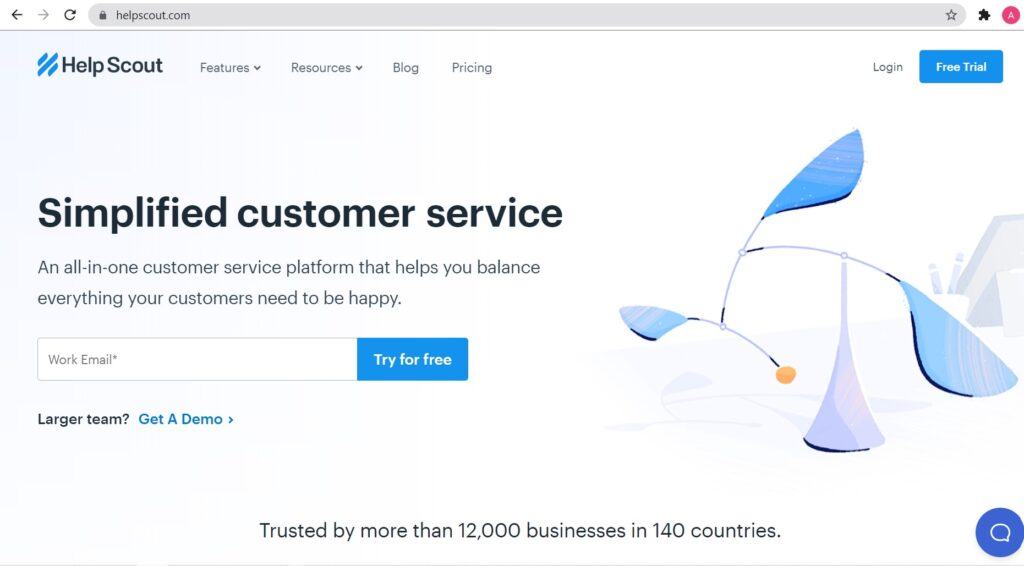
It will save all the responses in a dashboard so that you can create a database of canned responses. This will reduce agents’ time spent replying to every customer query. Help Scout will automatically answer some basic queries based on the customer data and previous answers.
HelpDocs
Do you want to create robust self-service material for your customers? Then, this tool is straightforward for creating a knowledge base. You can build a dynamic knowledge base for your customers using this platform. HelpDocs is a good customer support tool if you only want to provide self-learning communication channels to your customers.
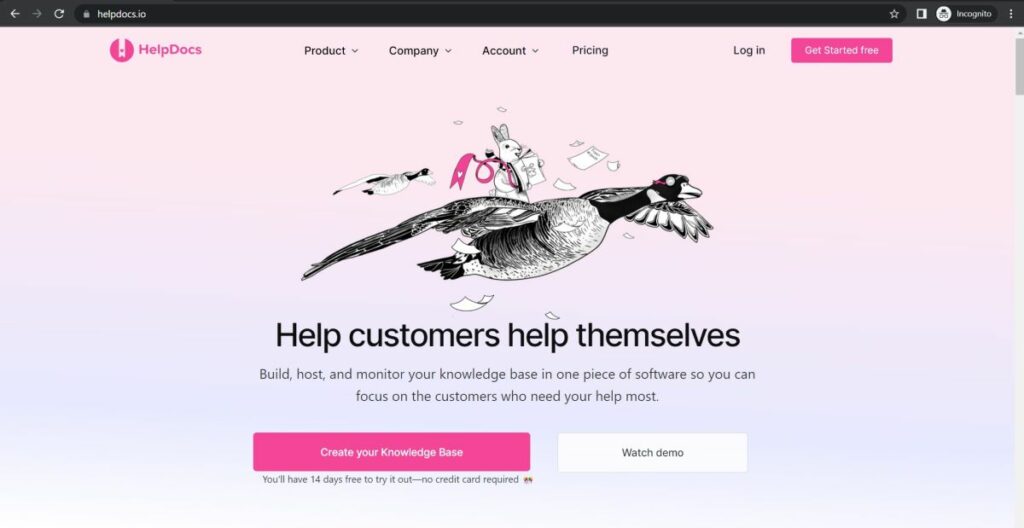
EngageBay
EngageBay is an omnichannel customer service platform that empowers small businesses to create a high-performing customer service team, streamline their workflow, and close more sales in less time.
Engagebay has a simple, intuitive, and, easy-to-use interface, making it accessible to anyone, regardless of their technical knowledge. Engagebay is a natural fit for companies looking to provide a single interface for their customer service needs.
This customer service platform helps you provide exceptional customer service by connecting to your existing support channels, such as live chat, phone, email, and social media. The pricing is among the most affordable and there is also a free plan for up to 15 users.
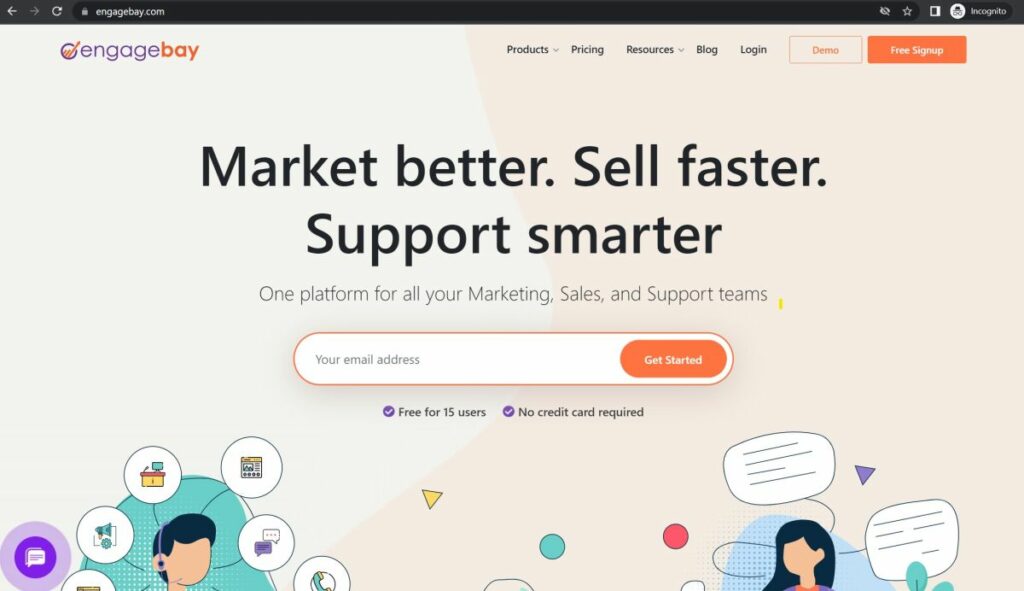
Olark
Olark is a robust live chat software. It has features like analytics, team management, smart automation, and more.
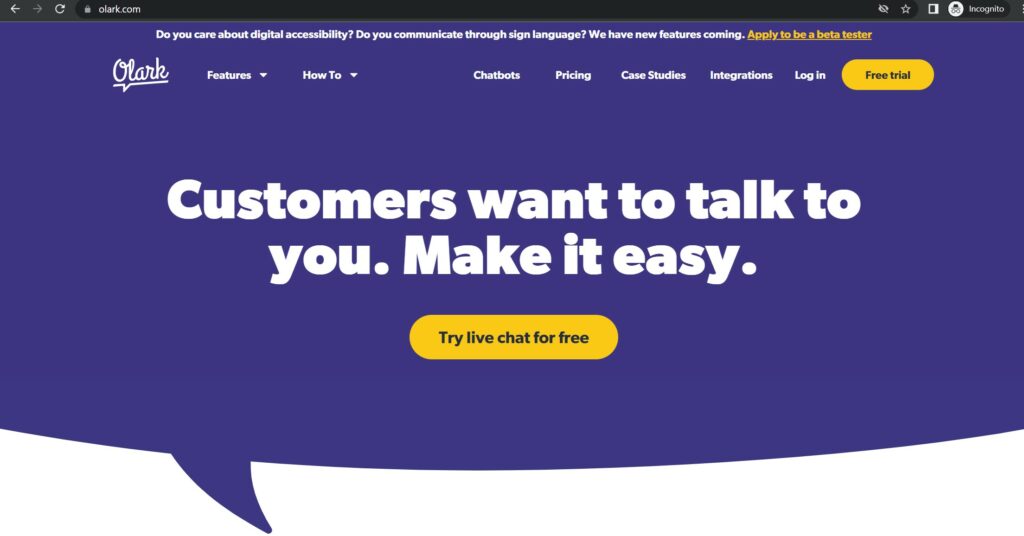
Olark has a simple pricing structure and the ability to add certain features a la carte. That means you can fit the Olark price within your budget. It is a perfect tool for small teams to provide omnichannel customer service.
Zendesk
Zendesk is a robust ticketing system used to resolve customer queries faster. With this tool, you can effectively manage customer conversations across Facebook, Twitter, and other social media platforms.

Zendesk is usually suitable for large teams as the product has complex features and a higher price range. However, some low-tier plans are also available that small groups can use.
Time Doctor
As we have already mentioned, Time Doctor is the best tool to track your customer support team’s performance and improve their productivity. The automatic tracker provides detailed performance reports to SWOT to analyze each team member.
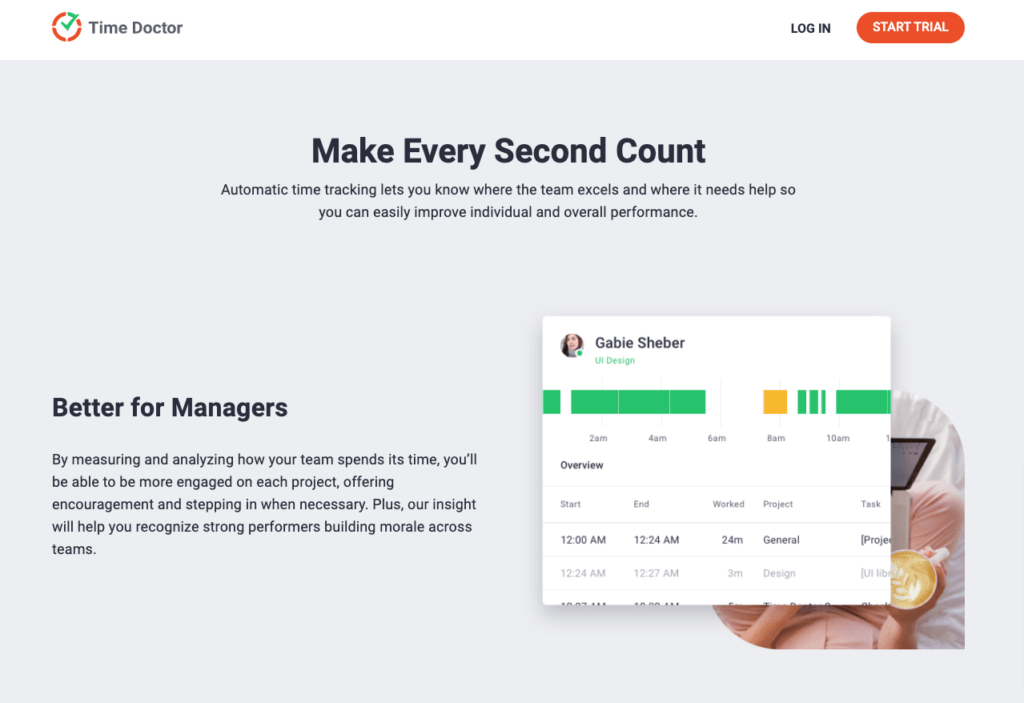
When you are familiar with the strengths and weaknesses of your employees, you can better make strategies to improve your customer support system. You can also fire or reward employees who provide the best customer support to your customers.
Real omnichannel customer support examples
Today, the omnichannel customer support strategy is used by several online businesses, especially e-commerce portals, that are heavily investing in this strategy. Therefore, you can find many great omnichannel customer support examples in the real world, such as:
Starbucks
Starbucks needs no introduction. This famous coffee brand uses an omnichannel funnel to attract new customers and retain old ones altogether. My Starbucks Rewards application helps to streamline each transaction with the order, tipping, and payment and offers a unique reward system.
Besides this, Starbucks uses communication channels like email campaigns, personalized offers, flash sales, and in-app purchases to attract new customers.
Disney
Disney’s website offers a seamless browsing experience on desktop and mobile devices. However, Disney has perfectly used technology to create a portal called My Disney Experience.
My Disney Experience easily integrates with wearable devices to support all the theme park operations. It can sync photos, tickets, and other theme activities in one place. This allows visitors to manage their Disneyland trip within the app.
Target
Target is a popular retail shopping store. It has taken omnichannel customer support to the next level with a customer-friendly website, mobile app, and physical stores. Using a mobile app, you can easily locate any item in your nearby target store and know where exactly it is located.
You can receive real-time notifications via mobile app or email when your order is ready to pick up. It also has a special Drive-Up that allows you to receive your order in the parking lot. You can also scan your purchase items with the Target app and learn information about them.
Let’s build an omnichannel customer service module now!
There you go, people! You are now set to build a custom omnichannel customer support system in your organization. You know what it takes to make an omnichannel customer support system, practical strategies to support this approach, and some cool tools to help your service agents.
So, we won’t repeat how omnichannel support can improve customer retention, and customer loyalty and help to build better relationships with your customers. We will just recommend you start building your omnichannel customer model now.

Joy Dcruz is a content marketing specialist who is currently working with SaSHunt. He likes researching topics related to B2B and SaaS. During weekends, he likes spending time watching YouTube.


